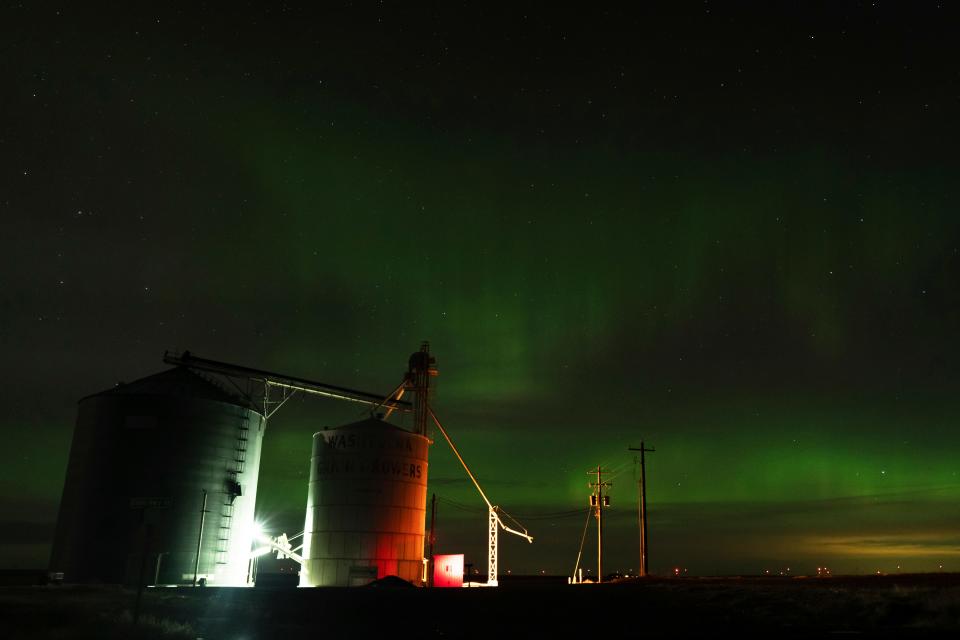Northern lights update: Latest forecast reduces South Dakota's chance of seeing Aurora borealis this week
The latest forecast has reduced South Dakota's odds of getting to view the northern lights this week.
South Dakota was originally one of 17 states predicted to possibly see the northern lights but some of those factors have changed, meteorologists said Wednesday.
This is not the first time this year that the natural phenomenon will be visible. In late April, a geomagnetic storm created lights that were shown over 30 U.S. states. The lights were visible in Iowa, North Dakota, Kansas and more.
While South Dakota is not currently listed as a place that has a chance of seeing the aurora borealis, the forecast could still change before Thursday. If viewing the northern lights is on your bucket list, you'll want to be ready. Here's everything you need to know about catching a glimpse.

Where could the northern lights appear in South Dakota?
A previous forecast from the University of Alaska Fairbanks Geophysical Institute stated the northern lights could be visible throughout the northern part of the state.
The current forecast from the NOAA Space Weather Prediction Center no longer lists South Dakota as a potential location.
What time will the northern lights be visible?
The best chance of viewing the aurora borealis is between 10 p.m. and 2 a.m. local time, the NOAA Space Weather Prediction Center states. People interested in viewing should get away from city lights and light pollution for a better chance at seeing them.
The higher the geomagnetic activity, the brighter the aurora is.
The northern lights in 17 states: Here's where you might view them this week.
Where else can the northern lights be seen?
Here are the other states that may see the northern lights this week:
Idaho
North Dakota
Montana
Alaska
Wisconsin
Minnesota
Michigan
Washington

When was the last major northern light event in the U.S.?
The possibility of seeing the northern lights comes after a geomagnetic storm, the last being late April, when the aurora borealis shone above 30 U.S. states. Lights appeared in parts of Iowa, North Dakota, Kansas and more.
What are the northern lights?
The northern lights, also called the aurora borealis, are an astronomical phenomenon in the Northern and Southern hemispheres where colored lights are visible in the night sky.
While they are more frequent closer to the North and South poles, they have been seen closer to the Equator. They can be viewed by looking in the direction of the closest pole (north in the Northern Hemisphere and south in the Southern Hemisphere), according to the Library of Congress.
What causes the northern lights?
The natural phenomenon is usually caused by solar winds coming from the sun and Earth's magnetic field, according to the NOAA Space Weather Prediction Center.
This article originally appeared on Sioux Falls Argus Leader: Northern lights update 2023: Chance of northern lights in South Dakota reduced

